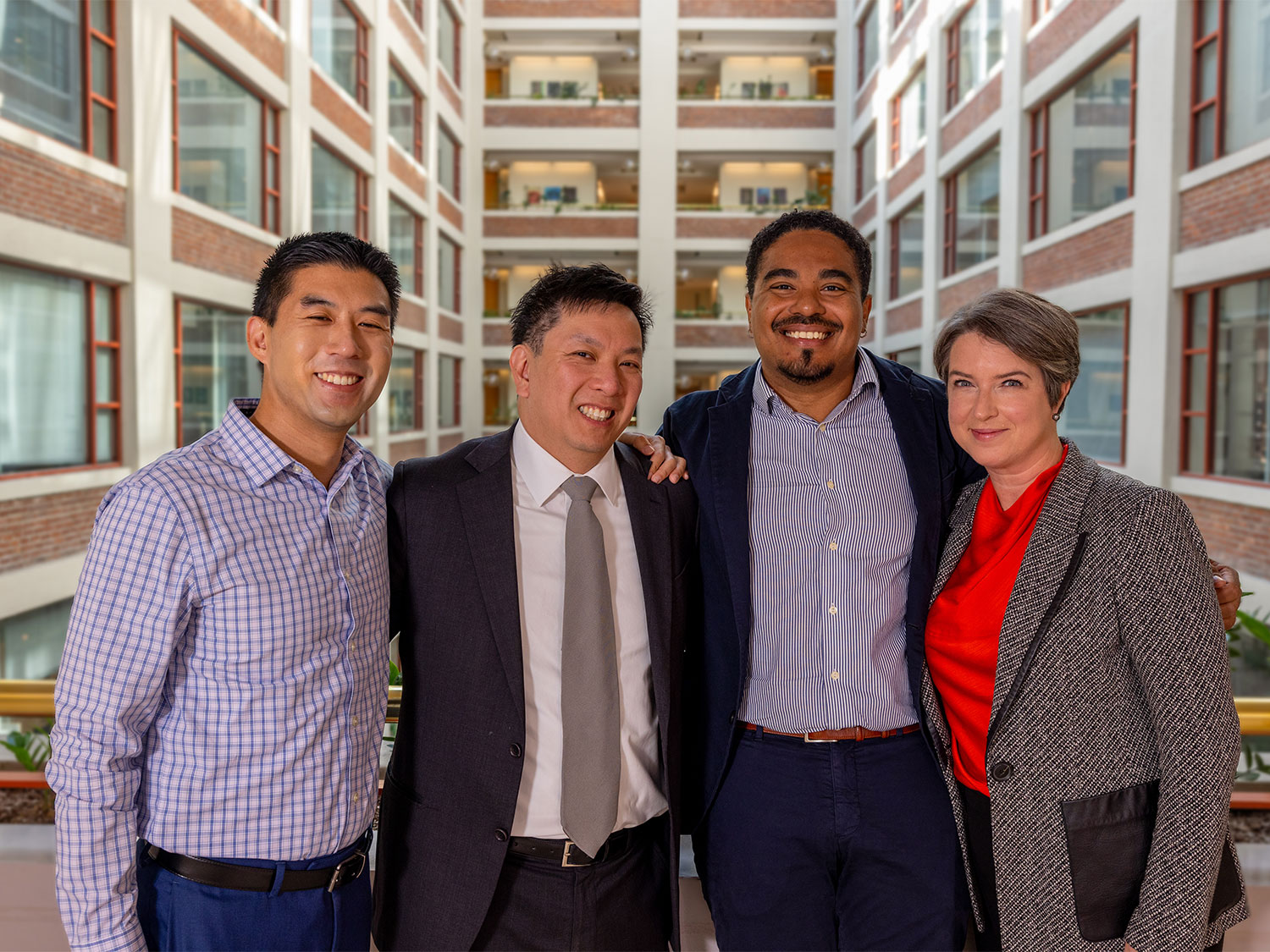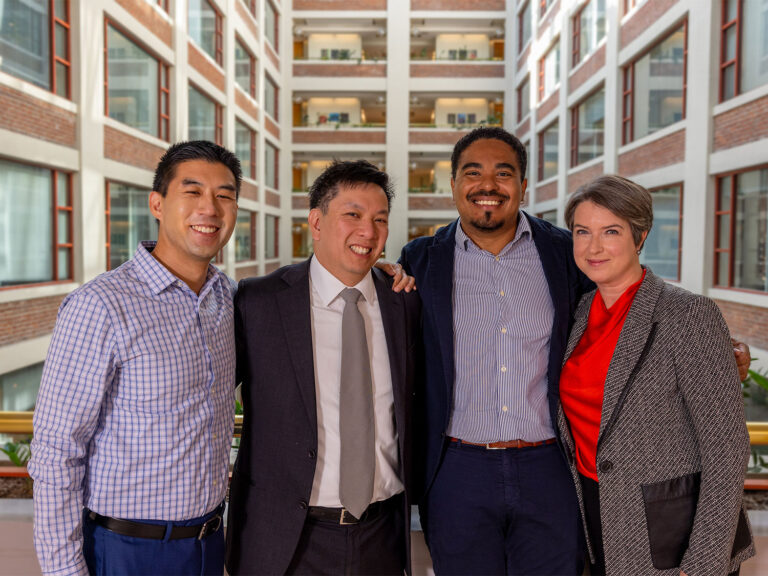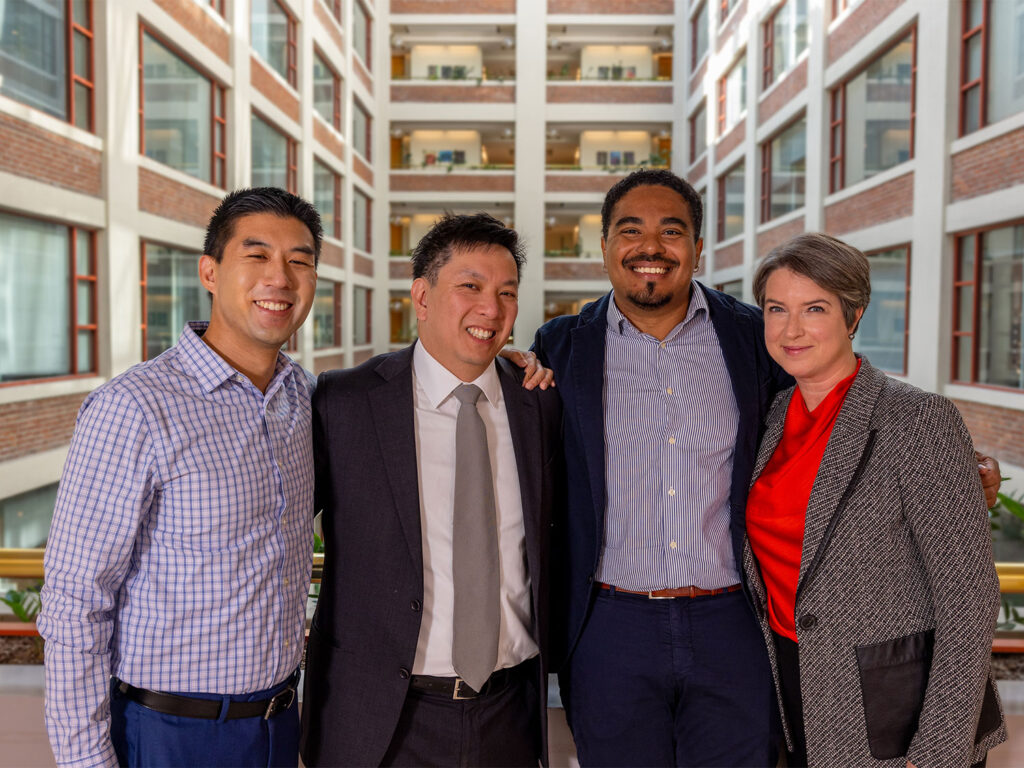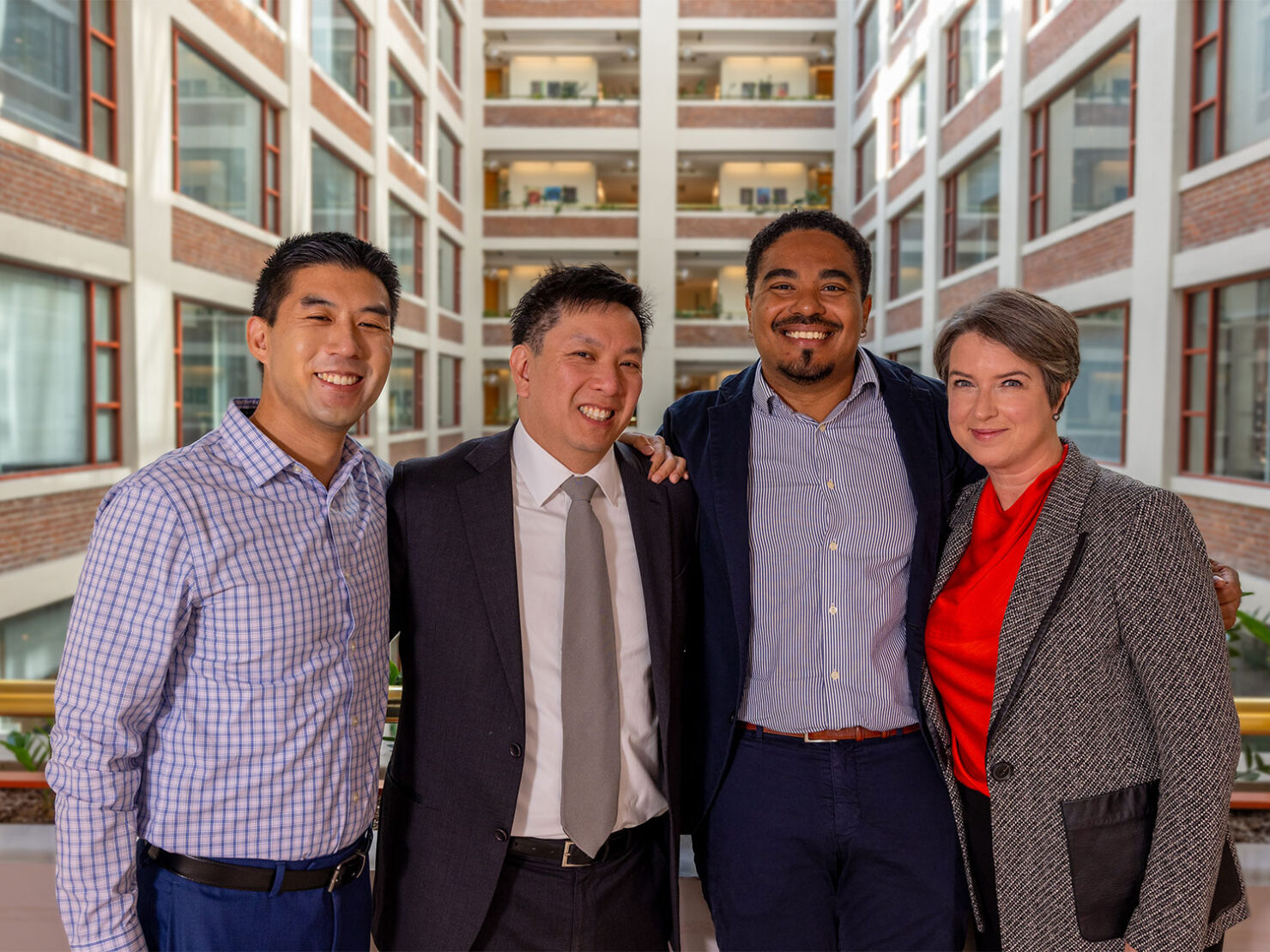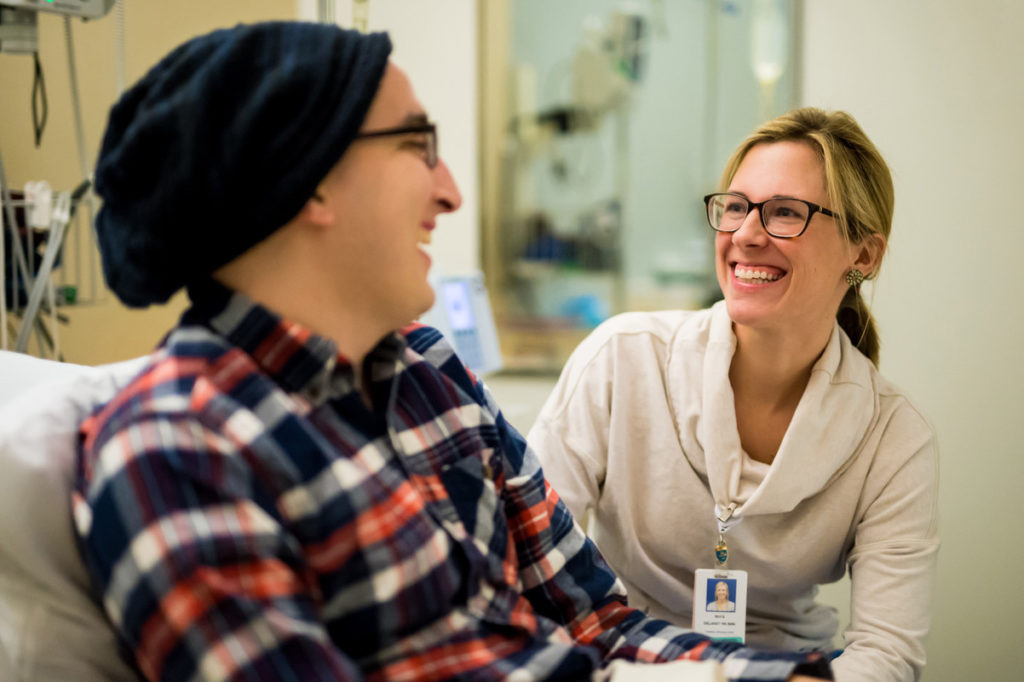In 2011, the FDA approved the first immune checkpoint inhibitor (ICI) drug for the treatment of melanoma, and the age of cancer immunotherapy was born. Today, ICIs — which work by shutting down the proteins that cancer cells co-opt to hide from the immune system — are considered one of the crown jewels of modern oncology, with more than 50% of cancer patients eligible for one of more than a hundred variations.
“Side effects from immunotherapy are like a fire in a bush. Once they’ve started, they’re hard to stop — even if you halt therapy.”
But there is a downside to taking the brakes off the body’s immune system. Up to 90% of patients treated with ICIs, depending on dose and drug combination, will experience immune-related side effects, ranging from common, irritating rashes to rare, but potentially deadly brain and heart inflammation.
Now, a team in the Krantz Family Center for Cancer Research at the Mass General Brigham Cancer Institute is on a quest to uncover the roots of these dangerous complications and make immunotherapy safer and more effective.
Using high-tech spatial imaging and blood analysis, Krantz Center colleagues Lloyd Bod, PhD, William L. Hwang, MD, PhD, David T. Ting, MD, and Alexandra-Chloé Villani, PhD, are working to identify the factors that trigger immune-related inflammation of the heart, colon and liver. The project, known as Promoting Response to Oncoimmunologic Therapies while EradiCating Toxicity, or PROTECT, for short, earned the team the 2024 Quantum Award — the largest and most prestigious award given by the Krantz Center — for its potential to transform our understanding and treatment of cancer.
“If we can pinpoint the specific drivers of toxicity in the affected organ — and demonstrate that this biology is distinct from the tumor’s — we can uncover drug targets that could decouple the therapy from the side effect, enabling to improve efficacy while mitigating toxicity. Ultimately, this could allow more cancer patients to safely benefit from these powerful drugs,” says Dr. Villani, principal investigator in the Krantz Center and the Center for Immunology & Inflammatory Diseases.
Grassroots Research
A geneticist and immunologist by training, Dr. Villani devoted her career to deciphering the link between immunotherapy and checkpoint toxicity after a family member experienced chronic side effects from cancer treatment.
In 2017, together with her colleague, oncologist Kerry Reynolds, MD, they launched the Severe Immunotherapy Complications (SIC) Service and translational effort at Massachusetts General Hospital, creating the first multidisciplinary care and research group dedicated to studying immune-related adverse events in the United States. From its grassroots beginning, the SIC team has grown and, today, comprises more than 60 physicians, immunologists, geneticists and computational biologists across six divisions and 10 departments of the hospital.
“Side effects from immunotherapy are like a fire in a bush,” Dr. Villani says. “Once they’ve started, they’re hard to stop — even if you halt therapy.”
“Imagine Google maps, but instead of land and roads, we’re able to focus on individual cells and molecules and see who their neighbors are.”
At present, the only available options to manage these side effects involve broad immune suppression. To avoid immune suppression and better manage these side effects, Dr. Villani and her team set out to determine if the immune reactions occurring in healthy tissue were distinct from the immune reaction occurring in the tumors. They began collecting blood and tissue samples from Mass General cancer patients who experienced immune-related side effects being cared for through the SIC service.
“We needed to define the cells driving the inflammation, but that’s not all,” says Dr. Villani. “We also needed to know what cells are next to those cells, talking to them, sustaining the inflammation — and to do that we had to look at where the cells were located in each organ tissue affected.”
Cancer Cartographers
When it comes to single-cell analysis, most methods begin with a process known as tissue dissociation, in which the individual cells are separated from the supportive, gel-like substance of the cellular matrix. But this process robs researchers of a valuable part of the puzzle: the original location of the cells in the sample. A cell’s location can reveal its function, which of its genes are turned on or off and how it communicates and interacts with other cells.

“It’s easy to blame everything on genetics, but we’ve known since the invention of the microscope that location matters,” says Dr. Ting, Krantz Center associate clinical director for innovation and the Amin and Zebunisha Juma Endowed Chair in Oncology. “Without the location, you just don’t have a full understanding.”
To identify and locate cells in the tissue samples, the PROTECT team turned to spatial transcriptomics — a profiling method that combines imaging with genomic sequencing, enabling researchers to track what genetic activity is occurring — and where it is occurring. The team is using this high-tech method to create detailed digital maps of every cell in the tissue samples collected by Dr. Villani and the SIC service.
“Imagine Google maps, but instead of land and roads, we’re able to focus on individual cells and molecules and see who their neighbors are,” Dr. Ting says. “I think of us as explorers mapping this new world.”
The maps will allow the team to see how healthy and malignant cells are arranged and interact — and provide a better understanding of the complex relationship between tumors and normal tissue. The ultimate goal, according to Drs. Villani and Ting, is to find a druggable target that could mitigate potential immune-related side effects.
In parallel with the maps, the team is also analyzing blood samples taken from the same patients in the hope of identifying biomarkers — such as proteins or cells — related to inflammation and other immune-adverse events. The presence of such biomarkers would allow for more optimal patient monitoring and also help physicians identify patients at risk for immune related complications earlier during the course of their treatment regimen.
Low Risk, High Reward
Once the maps are completed, Dr. Ting hopes to make the images available to other researchers, and possibly even solicit feedback from people outside of the field.
“We’re looking for the differences and the patterns,” he says. “When you show somebody a picture, it’s open to interpretation. Everyone can see something different, and we’ve got nothing to lose.”
Despite the potential impact this research could have on immunotherapy and cancer care, the size and scope of a project like PROTECT would prevent most university hospitals and pharma companies from undertaking it. Because of the multidisciplinary nature and demands of this research, which includes clinical access to patients and biobanking, pathologists preparing the samples for slides, genomics expertise to run spatial experiments, computing analysis, data infrastructure, oncologist and immunologist expertise for data interpretation and more, Dr. Villani is convinced this groundbreaking work could only happen at a place like Mass General Brigham.
“This is a key biological problem the field is facing, but because there isn’t an immediate benefit or a drug target to pursue, it can be hard to raise money for the research,” says Dr. Villani. “That’s what makes the recognition and funding through the Krantz Quantum Award so meaningful. With this support, and with our amazing multi-disciplinary team, we can tackle this problem and have a direct impact on patients’ lives.”
To learn more about this and other research efforts in the Krantz Family Center for Cancer Research, contact us.
